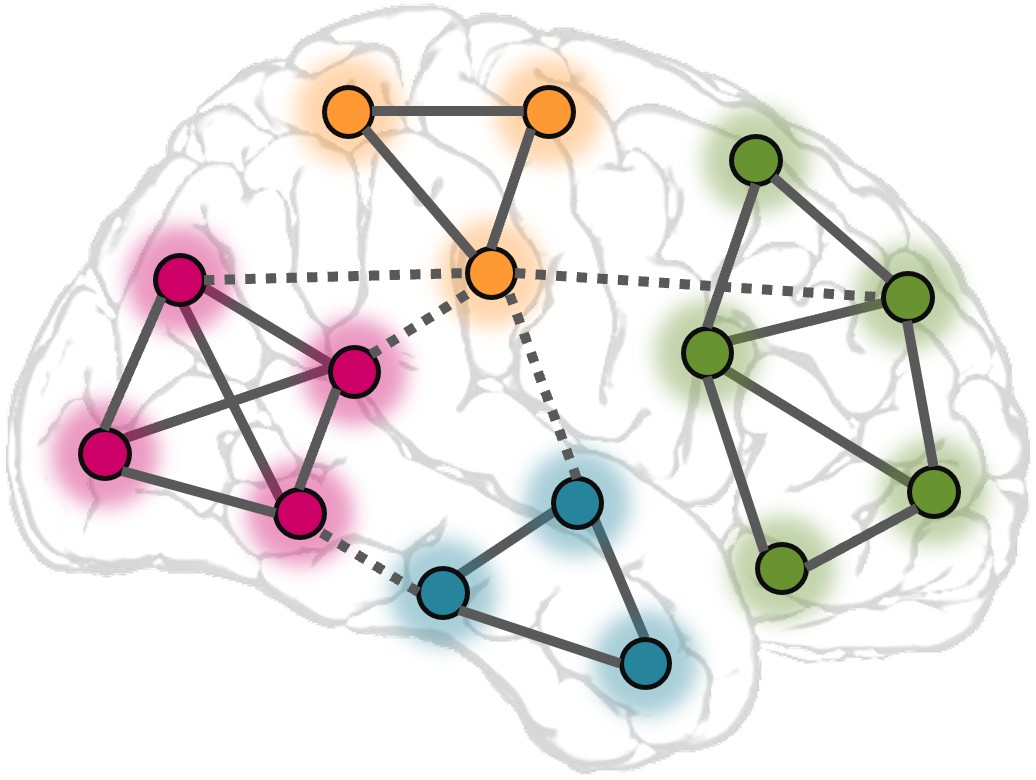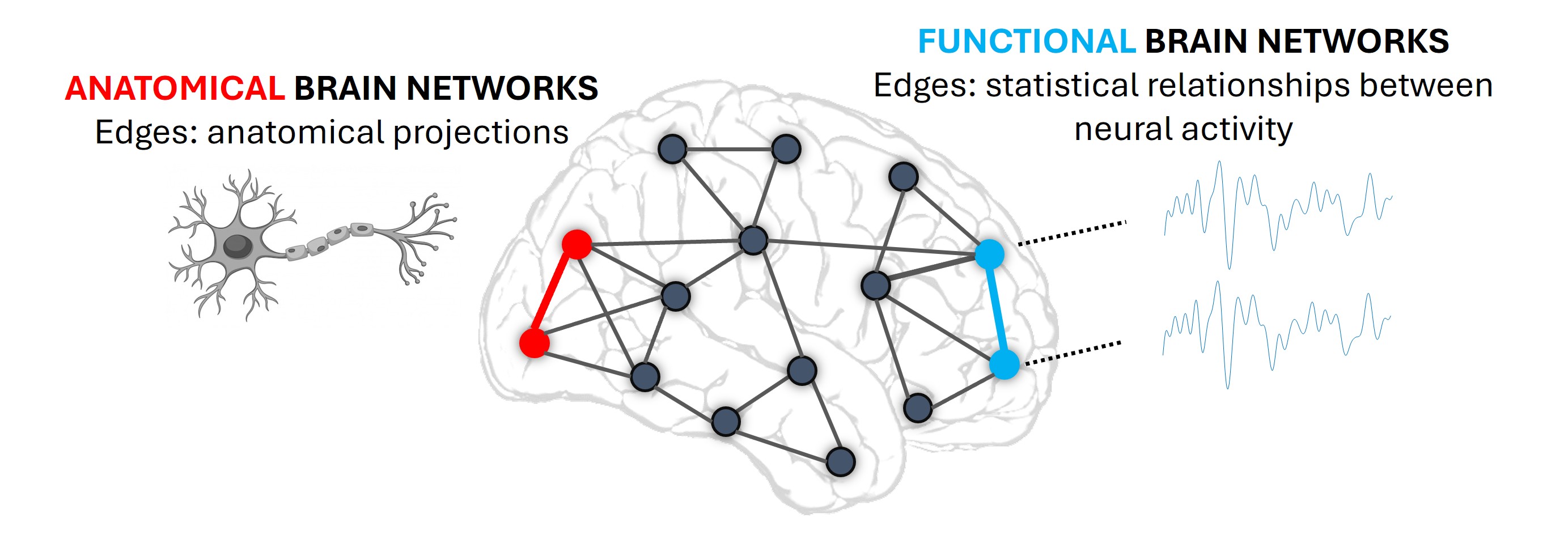Research
Overview 🧠🕸️
Over the past two decades, network neuroscience has transformed our understanding of brain function, shifting the focus from reductionist theories to systems-level perspectives. Traditional approaches sought to explain cognition, behavior, and mental disorders at the level of individual neurons, neural populations, or brain regions. However, we now recognize that these phenomena are emerging properties of complex interactions between neural systems.
In my lab, we will study the brain as a network of interconnected elements, where nodes represent neural elements—ranging from single neurons to large-scale brain areas—and edges capture their anatomical or functional relationships. By leveraging advances in neuroimaging and network science, we aim to uncover the fundamental principles governing brain organization and dynamics.
Our research will explore key questions in neuroscience, including:- What are the organizational principles of brain networks?
- How does the brain’s anatomical architecture shape its functional repertoire?
- How does the brain reorganize over short timescales to support cognition and over longer timescales to adapt across the lifespan?
- Can we identify network-based biomarkers for neurodegenerative diseases?
Through an interdisciplinary approach, we integrate computational modeling, neuroimaging, and data-driven network analyses to better understand the brain as a complex system.
Lines of research
Brain modular organization

Brain networks exhibit a modular organization. They present highly interconnected groups of nodes (communities or modules) that are only weakly connected to one another. This architecture facilitates a balance between functional specialization and interregional integration, a fundamental principle that underlies brain functioning. We advance methods to uncover modular structure in the brain to better understand its relation to cognition and behavior, as well as its role in neurodegenerative diseases and mental disorders.
Structure-function relationships
Structural connectivity represents the anatomical wiring of the brain. This anatomical layout constrains neural signaling, giving rise to patterns of statistical dependencies between the activity of distinct neural elements—a phenomenon known as functional connectivity. We investigate the relationship between structure and function in both human and non-human brain networks by advancing multi-modal analyses and exploring empirical and simulated perturbation processes.

Time-varying connectivity
We employ and advance multi-layer modeling to investigate how brain networks reconfigure over time. By tracking brain network topology over short timescales (seconds) we aim to uncover organizational principles that underly cognitive functioning. Conversely, by observing changes over longer timescales (days or years) we seek to clarify the developmental and aging processes that the human brain undergoes. In both cases, it is critical to observe differences and commonalities across individuals to disentangle the drivers of cognition and lifespan adaptations from circuits that have a bearing on individuality and can be associated, for instance, with cognitive performance.

Cross-species investigations
An emerging frontier in neuroscience is the study of non-human brain networks, reconstructed at nanoscale using electron microscopy, with the Drosophila connectome serving as a prime example. Through this line of research, we aim to potentiate the understanding of universal principles governing brain network organization, conserved across drastically different connectome mapping techniques, spatial scales and species. Additionally, we seek to leverage connectomes reconstructed at the synapse-level to directly link neural wiring to cellular function, thus bringing us closer to understanding neural mechanisms.